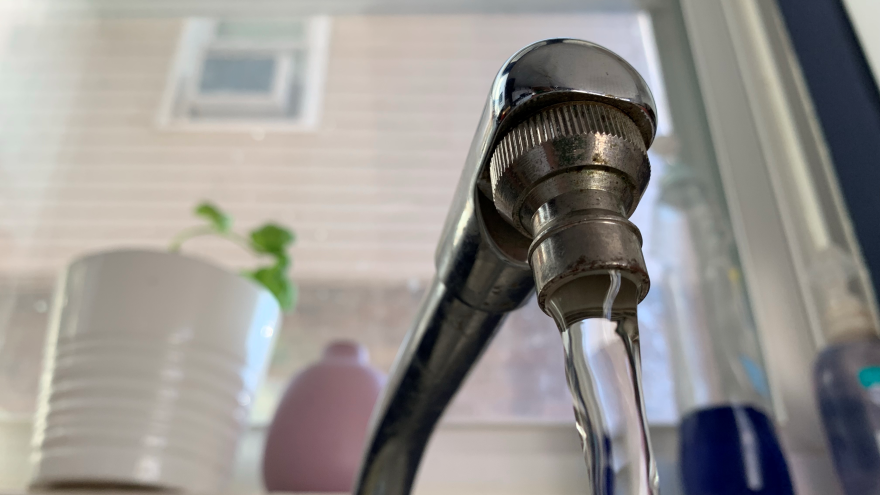BETHLEHEM, Pa. — If you happen to be one of Bethlehem’s 37,000 water customers, a recent letter in the mail may have listed what’s on record — to the best of the city’s knowledge — for the material of the lines servicing your home that connect to the street main.
But some may have read “lead status unknown” in their letter, with a list of instructions on what to do next to not only keep you and your loved ones safer, but also how to update the city for recordkeeping purposes and potential future replacement of the line if need be.
The water department is working with limited service-line knowledge on file dating back to 1910, according to Water and Sewer Resources Director Edward Boscola. Basically, officials know the who-where-when for city service line installations historically, but not the material used.
But that’s no cause for alarm, Boscola told City Council last week.
“It’s important for everybody to know that the lead levels in the city’s drinking water system are very low."Edward Boscola, Bethlehem water and sewer resources director
The maximum federal action limit for lead is 15 parts per billion — with sampling across Bethlehem consistently averaging below 1 part per billion, according to Boscola.
Along with that, he said, the city has put a corrosion inhibitor in its water as an extra precaution for the last 30 years or so.
“It’s important for everybody to know that the lead levels in the city’s drinking water system are very low,” Boscola said.
What you can do
He said you can help his team by heading down to your basement, finding the pipe that runs through the wall and connects at the water meter and reporting what you find to officials. That line could be up to 1” thick, and made of copper, lead, brass, galvanized steel or even high-density polypropylene, Boscola said.
Note the color: If it's silver, there's a chance it's either lead or galvanized steel — a magnet will stick to a steel line, but not a lead one.
For customers suspected of having lead piping, Boscola said the water department will work with customers to pull samples inside the home. Email leadserviceline@bethlehem-pa.gov for potential testing opportunities.
For City of Bethlehem water customers suspected of having lead piping, the water department will work with customers to pull samples inside the home.
But if you see your service line is made of copper (the color of a penny), Boscola said to hold off on the email and rest assured that copper levels in city water are well below the mandated 1.3 parts per million.
“We’re really only focusing on those that we know or suspect to have lead lines,” Boscola said. “Honestly, we just do not have the resources to sample everybody in the city.”
What sparked the letters
His department happens to follow the aptly named Lead and Copper Rule from the Environmental Protection Agency to establish these guidelines. It saw its most recent update in October (leading to the mass mailing of the letters here in the city), where it called for drinking water systems nationwide to find lead piping and replace it with a safer option.
Moving forward, Boscola and his team have three years to update its service line inventory and 10 years from there to figure out how to get all the lead piping replaced.
“For example, if we had 1,000 service lines that we identified were lead, the EPA expects you to replace 100 a year over 10 years,” he said. “That way, it provides a little bit of predictability and planning to be able to finance that, like over a period of time.”
“For example, if we had 1,000 service lines that we identified were lead, the EPA expects you to replace 100 a year over 10 years. That way, it provides a little bit of predictability and planning to be able to finance that, like over a period of time.”Edward Boscola, Bethlehem water and sewer resources director
Funding for such projects, when done by the city, has previously come through PENNVEST grants. One example of this came with the replacement of 400 service lines across the city service area, at an average price of about $10,000 per home.
Boscola said that money would typically come with the city replacing the public portion of the service line that connects from the curb to the street main, as well as the other private portion that runs from the curb into the home. Those are the city’s targets for potential lead piping, not the water mains running below the street, he said.
Also bear in mind, “lead can also be found in older brass fixtures and valves and in old solder that connects pipes,” the city website states.
Health risks associated with lead exposure
The federal Department of Health says the main issue behind childhood lead poisoning isn’t the water — chipping paint and dust in older homes can be the more typical culprit.
The EPA has tied lead-contaminated water to human exposure cases at a rate of 10-20%.
The state Plumbing System Lead Ban and Notification Act — which banned lead in plumbing construction or repairs even beyond just drinking water infrastructure — applies to any builds that went up after Jan. 6, 1991, the Department of Environmental Protection website states.
“We could say, for sure, that if a house was built after ’91, it’s good. After ’91, it probably has no lead service. We know, just intuitively, that we weren’t using lead in the 1950s, 60s, 70s, 80s, right? But the problem is, we can’t prove it.”Edward Boscola, Bethlehem water and sewer resources director
“We could say, for sure, that if a house was built after ’91, it’s good,” Boscola said. “After ’91, it probably has no lead service.
“We know, just intuitively, that we weren’t using lead in the 1950s, 60s, 70s, 80s, right? But the problem is, we can’t prove it.”
Unborn children, children under 6 years old, pregnant mothers and middle-aged men and women have been found to be most susceptible to health complications from lead exposure, according to the DEP. Those could include hindrances in development and attention span for young children and increased blood pressure for folks of older age, with risks of cancer or stroke in cases of prolonged exposure.


